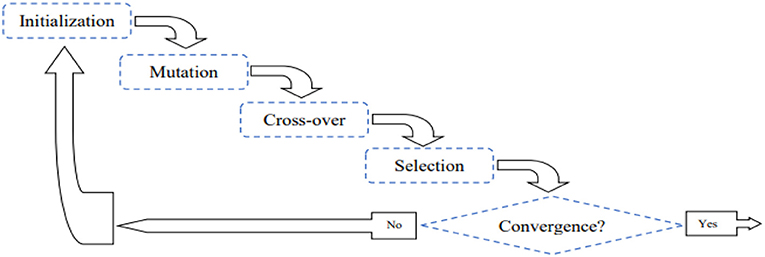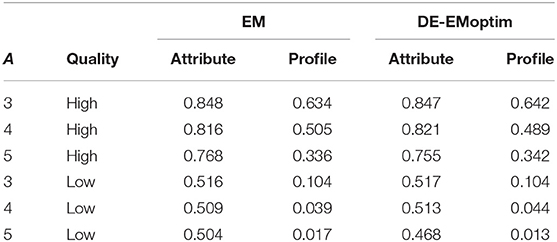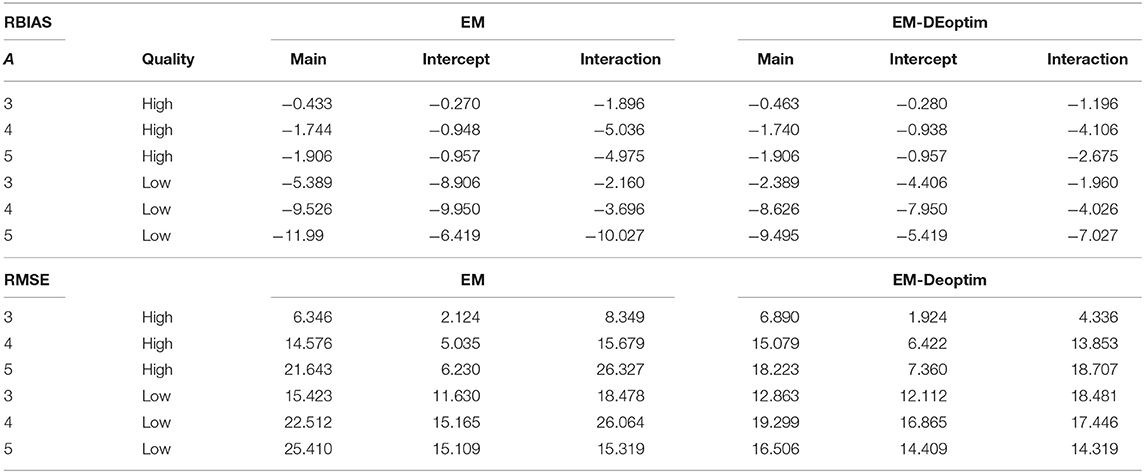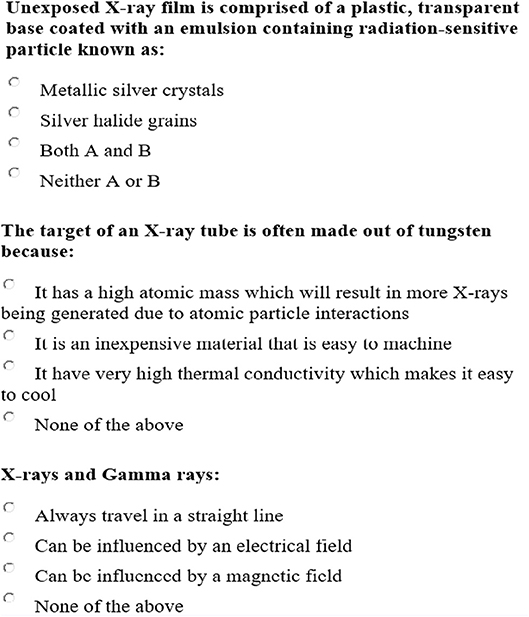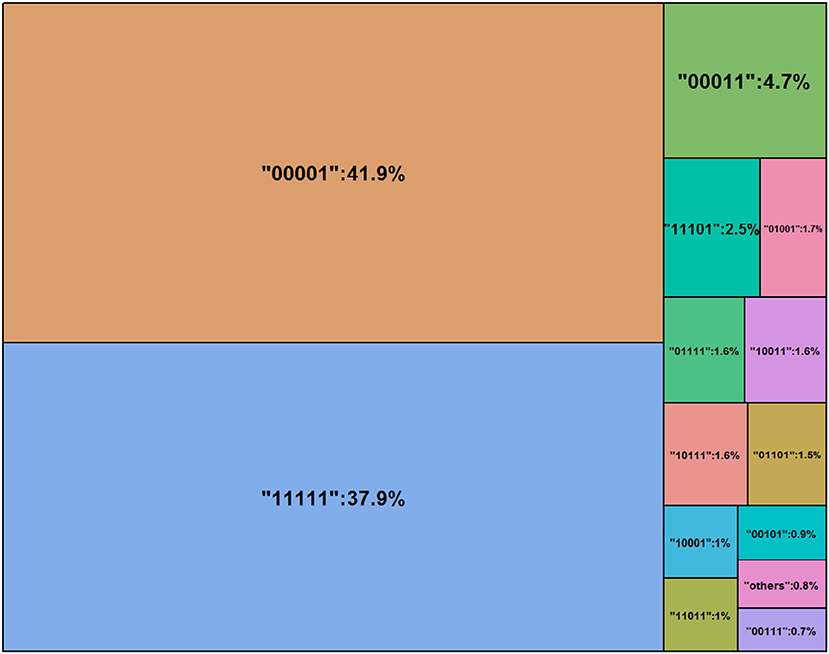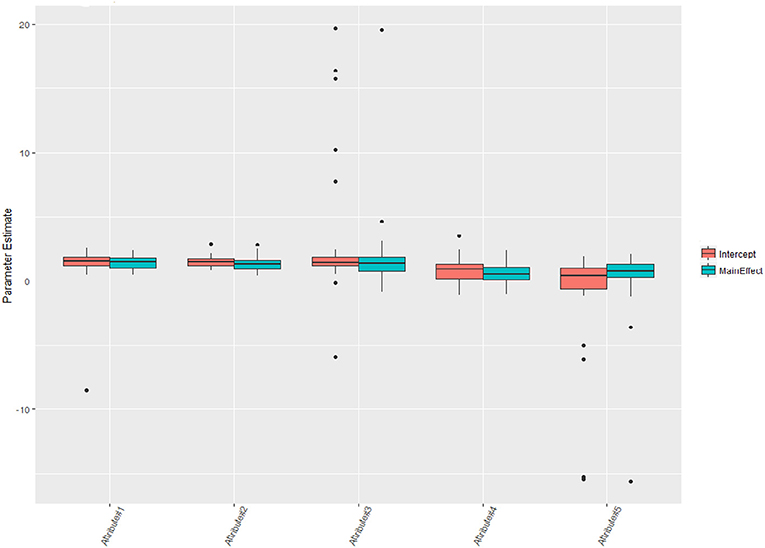- 1Department of University Libraries, University of Alabama, Tuscaloosa, AL, United States
- 2Department of Educational Studies, University of Alabama, Tuscaloosa, AL, United States
A log-linear cognitive diagnostic model (LCDM) is estimated via a global optimization approach- differential evolution optimization (DEoptim), which can be used when the traditional expectation maximization (EM) fails. The application of the DEoptim to LCDM estimation is introduced, explicated, and evaluated via a Monte Carlo simulation study in this article. The aim of this study is to fill the gap between the field of psychometric modeling and modern machine learning estimation techniques and provide an alternative solution in the model estimation.
Assessments have been widely used in education as a part of a summative program for many purposes, such as evaluating whether students have reached the desired proficiency level and determining whether students should be given a scholarship. However, in the past decades, stakeholders have shown a strong interest in the information of students' strengths and weaknesses of their knowledge and skills. This has led to fruitful exploration in the field of psychometrics of how to extract diagnostic information to enhance classroom instruction and learning. Cognitive diagnostic models (CDMs) are a set of psychometric models developed to identify whether a student masters a set of fine-grained skills, such as addition, subtraction, multiplication, and division in math ability assessments. For example, question “2+4–1” measures addition and subtraction, and “4 × 2/3” measures multiplication and division. Although it seems straightforward to conclude that a student may not master addition or subtraction if s\he fails 2+4–1, it is indeed much more complicated in practice in that students may answer a question correctly by guessing or fail a question due to carelessness. As a result, formal psychometric models such as CDMs should be employed for data analysis to make sure the inferences are valid. In addition to educational testing, CDMs are useful in psychological measurement. For example, the literature indicates that neuro-vegetative symptoms are a general construct that contains three attributes: depression (DEP), fatigue (FAT), and sleeplessness (SLE; Rabinowitz et al., 2011). Using CDMs allows researchers/practitioners to investigate the attributes of a given patient. Among the item data types, a binary scale is the most common one that has been adopted in many surveys and measures.
Prior to the data analysis using CDMs, whether a skill is required for answering a question needs to be determined by content experts and/or cognitive psychologists and specified in a binary matrix (Q-matrix; Tatsuoka, 1983) as illustrated in Table 1 such that theory-granted structure can be applied to the measurement of interest. Rows of the Q-matrix represent questions and columns represent skills. Element 1 indicates that the skill is measured by the question and 0 indicates that the sill is not measured.
Recent advances in modeling development have produced several general CDMs, such as the Log-linear CDM (LCDM; Henson et al., 2009) and, equivalently, the generalized Deterministic Input; Noisy “And” gate model (G-DINA; de la Torre, 2011). The LCDM provides great flexibility such as (1) subsuming most latent variables, (2) enabling both additive and non-additive relationships between skills and questions simultaneously, and (3) syncing with other psychometric models. Rupp et al. (2010, p. 163) proved that LCDM can be constrained to core CDMs such as Deterministic Input; Noisy “And” gate (DINA; Junker and Sijtsma, 2001) model, Noisy Input; Deterministic “And” gate (NIDA; Junker and Sijtsma, 2001) model, and the Reduced Reparameterized Unified Model (RRUM; Hartz, 2002), and Deterministic Input; Noisy “Or” gate (DINO, Templin and Henson, 2006) model.
The LCDM is essentially a restricted latent class model (Day, 1969; Wolfe, 1970; Titterington et al., 1985), and mathematically, it can be defined as:
where yp = (yp1, yp2, …, ypI) is the binary response vector of person p on a test comprised of I items, and element ypi is the response on item i. vc is the probability of membership in latent class c, and πci is the probability of correct response to item i by person p from latent class c. The log-likelihood of observing item responses of N persons can be expressed as
Further, Equation 2 can also be converted to:
where can be replaced by due to the mathematical property of log operation.
Assume the number of attributes is A, the mastery profile of the attributes for a random person is denoted by α = (α1, α2, …, αA), where element αa is either 1 or 0. In total, there are 2A possible attribute profiles and correspondingly 2A latent classes. For example, when A = 4, a person with attribute profile α = (1, 1, 1, 0) has mastered the first three attributes except the last one. As illustrated in Table 1, a Q-matrix of size I*A is necessary for a LCDM, where the (i, a) element qia is 1 when item i measures attribute a and 0 otherwise. The conditional probability of person p with attribute profile αc answering item i correctly can be written by
where qi is the set of Q-matrix entries for item i, λi, 0 is the intercept parameter, where λi represents a vector of length 2A − 1 that contains main effect and interaction effect parameters of item i, and h(αc, qi) is a vector of the same length with linear combinations of the αc and qi. Particularly, can be expanded to:
where λi, 1, (a) and are the main effect for attribute αa and the two-way interaction effect for αa and . Since elements of αc and qi are binary, h(αc, qi) contains binary elements, which indicate effects that are estimates of interest. For an item measuring n attributes, n-way interaction effects should be specified in h(αc, qi). Table 2 provides a sample of a measure with three attributes: the first item that measures one attribute only (i.e., α1) has two estimates, where the third item which is associated with all given attributes contains eight estimates.
LCDM Estimation
Traditionally, estimating LCDMs refers to the expectation maximization (EM) algorithm (Bock and Aitkin, 1981) that maximizes the marginal likelihood; this is the most commonly-seen algorithm in the CDM literature. In addition to the EM algorithm, Markov chain Monte Carlo (MCMC) techniques can be, theoretically, used to estimate the LCDM, but to date its application remains upon simpler CDMs such as the DINA model (da Silva et al., 2017; Jiang and Carter, 2018a). This study focuses on the EM algorithm due to its practicality and popularity. The EM algorithm is an intertwined updating mechanism consisting of E- and M-steps. With the provisional item parameter and probability of membership estimates from iteration t-1 (i.e., λs and vs), the posterior class probability for person p can be obtained in the E-step by
Based on Equation (6), the expected number of persons in latent class c and the expected number of persons in latent class c who answer item i correctly can be obtained by:
respectively. In the M-step, the following function is maximized with respect to item parameters λ:
and the probability of membership is updated by
Maximizing objective function ℓ usually requires Newton or Fisher scoring methods, where first- and second-order derivatives i.e., where the first component is a vector and the second component is a matrix) of the objective function are needed. If becomes 0, the iteration process will stop and therefore fail to converge.
As a restricted latent class models, LCDM estimation faces the risk of local maxima (Jin et al., 2016). Theoretically, to obtain valid and accurate estimates, the model estimation should converge at a global maximum of the likelihood function, however, the mixture component of a mixture model is likely to trap the aforementioned EM updates to local maxima. In addition, label switching can occur and therefore lead to a misinterpretation of an estimation. For instance, a person mastering all attributes of interest can be mistakenly labeled as one with zero-mastery. Basing on the traditional EM approach, Rupp et al. (2010) add constraints to the parameter estimates (e.g., ensuring main effects are non-negative); this constraint approach substantially reduces the risks of local maxima and label switching (Lao and Templin, 2016). Using Mplus (Muthén and Muthén, 2013), a commercial software designed for latent variable modeling that by default deploys the traditional EM approach, Templin and Hoffman (2013) outline the procedures to specify syntax with parameter constraints for the LCDM estimation. Note that in the LCDM estimation, the EM approach in Mplus is turned into an accelerated version, meaning its updating steps are replaced with Quasi-Newton and Fisher scoring, this, however, still falls under the family of the traditional EM algorithm. Although Templin and Hoffman's Mplus practice has been implemented in many published works and is proved to be efficient (see Bradshaw and Templin, 2014; Li et al., 2016; Ravand, 2016 for example), it is still not avoiding the convergence failure issue: Templin and Bradshaw (2014) conduct a simulation study with vast conditions each of which was replicated 500 times, where the result shows the numbers of converged replications range from 330 to 447. To avoid the convergence issue while maintaining the properties of the EM approach, we introduce a machine-learning technique named Differential Evolution to estimate LCDMs.
Differential Evolution
Global optimization under machine-learning umbrella has gained tremendous attention from researchers, mathematicians as well as professionals in the field of engineering, finance, and scientific areas (Mohamed et al., 2012). Many applications of this kind impose complex optimization problems such traditional estimation techniques based upon derivatives become cumbersome or even impossible. To avoid the mathematical deriving procedures yet provide reliable solutions to complex models, Differential Evolution (DE) is invented (Storn and Price, 1997), developed, and applied to practice in different fields (e.g., Paterlini and Krink, 2006; Das et al., 2008; Rocca et al., 2011). Inspired by Darwinian evolution that entails the idea of mutation, crossover, and selection, DE is an enhanced version of derivative-free evolutionary algorithms and has been recognized as a simple yet efficient optimization approach in solving a variety of benchmark problems. The complete DE algorithm cycle can be found in Figure 1; in particular, the algorithm starts by sampling D candidate solutions to the problem of interest, where each candidate solution can be either a scalar or a vector (if there are more than one estimate). The mutation procedure takes place by performing simple arithmetic operations (i.e., addition, subtraction, and multiplication) among the existing solutions (namely parent solutions). The resultant mutation outcomes are then crossed over with the parent solutions to produce new candidate (offspring) solutions. Finally, in a one-to-one selection process of each pair of offspring and parent vectors, candidate solutions that fit the model better are passes into the next evolutionary cycle. This cycle iterates until the estimation converge. Mathematical and algorithmic details can be found in the following paragraph.
Let R be the number of estimates, λLO and λHI be the lower and the upper limits (vectors) of the parameters of the estimates, and G(·) be the objective function. Initial candidate solutions λd = (λd1, λd2, …, λdR) for d = 1, 2,…, D can be generated by (1) randomly drawing samples from certain distribution(s) or (2) specifying values with educated guesses, where D is the number of candidate solutions. Mutation procedure can be achieved via different strategies: (1) DE /rand/ 1, (2) DE/current-to-rest/1, and (3) DE/best/1. In particular, for a given set of candidate solutions λd for d = 1, 2,…, D, the mutation outcomes md can be calculated as:
Where δo, δ1, and δ2 are distinct integers uniformly sampled from 1 to D, λδ1 − λδ2is the difference vector that would be used to mutate two selected parent candidates (e.g., DE/rand/1), λbest is the best candidate solution at the current iteration, and finally Fd is the mutation scaling factor that is randomly drawn from a uniform distribution on the interval (0, 1). Some md may be produced beyond the constraints set by λlo and λhi; some effective solutions to the violation include (1) re-generating a candidate solution until it is valid and (2) setting penalty to the objective function. If an element r in a candidate solution encounter the boundary issue, a quick fix by setting the violating elements to be the middle between boundaries and the that of its parent solution. That is, for mdr < λLOr and for mdr > λHIr. After obtaining md from the mutation procedure, a “binomial” crossover operation forms the offspring candidate solutions: let CR be a crossover probability that controls the fraction of the elements that are copied from the parent candidate solution and udr be a candidate solution, if a random number zr sampled from a uniform distribution (0, 1) is smaller than CR, the element r of the offspring of udr is mdr, and λdr otherwise. The default CR is usually set to 0.5 for a balanced stochastic move. Finally, if G(ud) is better than G(λd), ud would replace λd to serve as a parent solution for the next iteration. The DE algorithm can be tailored to a parallel computing platform; technically each candidate solution can be calculated in an independent computational unit such that queuing time can be shortened. That said, instead of sequentially updating the candidate solutions, a parallel DE algorithm can perform simultaneous updates.
To illustrate how the DE algorithm functions, an example of a simple regression estimation is provided here. Let independent variable x = [22, 14, 15, 12, 10, 26, 11, 28] and dependent variable y = [44, 29, 30, 27, 24, 51, 25, 56] resulting in = [4.98, 1.78] with the ordinary least squares (OLS) estimator. Using the DE algorithm in this case sets the objective function G(λ) to , which ideally should be maximized to −7.19 according to the OLS result. To keep the demonstration simple, let the number of candidate solutions D = 3 and initial values for λ1, λ2, and λ3 were arbitrarily set to [2, 1], [−3, 5], and [1, 2]. At the initial iteration, the best solution was [1, 2] as G(λ3) = −24 where G(λ1) and G(λ2) were −2400 and −21672. Therefore, λbest at this stage became λ3. With certain random draws for a given mutation calculation (e.g., DE/best/1), m1, m2, and m3 happened to be [3.5, 0.8], [−1, 3.5], and [2, 1.8]. Let CR = 0.5, if a random generation produced z1 = 0.7 and z2 = 0.4 for example, the first offspring u1became [3.5, 1] by taking elements from λ1 and m1. This resulted in G(u1) = −2022, which is larger than G(λ1), and therefore the new λ1 would be replaced by u1. On the other hand, if u3 became [1, 1.8] which produced G(u1) = −116.8, then the λ3 remained still. This process continues until G(λ) converges to −7.19.
In this paper, we integrated the DE into the EM algorithm to estimate LCDMs1 To make the proposed approach easy to follow, we name it EM-DEoptim algorithm from here. Especially, the method for updating item parameters within the M-step is replaced by the DE algorithm, while the rest of the EM procedures remain identical. To be concrete, the objective function that the EM-DEoptim maximizes is Equation 3, given vc for each latent class is known. As the DE is a stochastic and global optimization technique, the EM-DEoptim is expected to encounter fewer occurrences of the local maxima problem than the traditional EM algorithm (Celeux et al., 1996). In addition, as addressed above, the EM-DEoptim is based upon derivative-free framework such that it can be easily fitted to arbitrarily customized LCDMs without re-deriving the gradient functions nor re-approximating information matrix. For example, if constraining the main effects of Item i and Item i' to be equal while still allowing others to be estimated freely is needed, the EM-DEoptim algorithm can handle the situation by simply assigning the same labels to the constrained parts in the likelihood function expression, where the traditional EM algorithm needs altering the derivatives. This advantage can effectively prevent the aforementioned un-differentiable situations. Last but not least, the computational speed of the EM-DEoptim algorithm, although not outperform the traditional EM algorithm in a singular operation environment, can be substantially improved via parallel computing facilities that are naturally suited to modern machine-learning-based techniques.
Simulation Study
We conducted a simulation study to demonstrate the utility of the EM-DEoptim algorithm. Specifically, the study involved two investigations: the number of times that the traditional EM algorithm fails and the comparison between the EM-DEoptim algorithm and the traditional EM algorithm in terms of the parameter recovery. In the simulation study, the numbers of attributes A were set to 3, 4, 5. The Q-matrix was randomly generated: when there were 3 attributes (A = 3), a balanced Q-matrix in which each item measures either one or two attributes was utilized; similarly, at the condition of 4 and 5 attributes, each item measures two to three attributes. The number of items I was set to 30 and the number of persons N was set to 300. The attributes were generated via two steps: continuous values were initially generated from a multinormal distribution MV (0, Σ) of which the diagonal elements of Σ were constrained to 1 and the off-diagonal values (i.e., correlations between attributes) were randomly drew from a uniform distribution ranging from 0.7 to 0.9, and these continuous values were further converted onto the binary scale by comparing the values with zero (i.e., 1 if the value is larger than zero and 0 otherwise). Finally, the item parameters were specified to two level: high-quality group that sets main effects = 2, intercepts = −1.5, and interaction effects = 0.5, and low-quality group that makes main effects = 0.2, intercepts = −0.5, and interaction effects = 0.1.
The traditional EM algorithm was realized via the package CDM (George et al., 2016; alternatively, one can choose the package GDINA by Ma and de la Torre, 2018), where the EM-DEoptim algorithm was executed in R (R Core Team, 2018). The stop criterion in CDM was set to 1,000 iterations or the change of likelihood value < 0.001, where the EM-DEoptim algorithm was forced to stop if the iteration number reaches to 1,000 or the likelihood value remains identical for 10 iterations. In this study, the DE configurations were set to default (Ardia et al., 2011): DE/current-to-rest/1 with Fd = 0.8, CR = 0.5, and 500 candidate solutions, where ± 20 is used to constrain the parameter estimates. The machine used was Dell Precision 3520 with 16GB RAM and a 2.90 GHz i7-7820 4-core Intel processor. The study was replicated for 200 times.
The dependent variables in this part of the study are (1) the number of convergence failure of the EM algorithm, (2) relative bias (RBIAS) and root mean squared error (RMSE), and (3) the attribute classification accuracy measured by each attribute and each profile. Overall, there was only two failed convergence failures when the item quality was high, where the low-quality item parameters led to seven failures: two cases in the situation of A = 4 and five cases when A = 5. On the other hand, EM-DEoptim had no unexpected terminations during the iterations. Table 3 shows the attribute classification accuracy rates. Both algorithms produced very similar results, where some patterns can be discovered: (1) the more attributes the estimation face, the less accurate the attribute estimates are yielded, (2) the higher the item parameter quality is, the more accurate the attribute estimates are produced, and (3) the profile accuracy is more sensitive to the item parameter quality.
Similar to the attribute estimates, the item parameter recovery presented similar pattern for both algorithms as listed in Table 4. The biases and MSEs were higher when (1) the number of attributes was larger and (2) the item parameter quality is higher. In addition, main effect estimates were more accurate and efficient than both interaction and intercept effects. This finding is not uncommon in complex psychometric models (Jiang et al., 2016). When the item parameter quality is low, and/or the number of attribute is large (e.g., 5), the EM-DEoptim performed better than the traditional EM algorithm. An important reason is that the boundary constraints imposed by the EM-DEoptim algorithm can limit the estimates into a certain range. Although not a main focus of the studies, the computing speed showed a substantial difference: the average time (in seconds) for 3-, 4-, and 5 attributes were 4.45, 22.55, and 78.64 for the traditional EM algorithm, while the EM-DEoptim took 61.22, 354.18, and 1228.76.
Real Data Application
The dataset used in this session is an assessment of a health profession administered to 3491 test takers (Jiang and Raymond, 2018). The number of items is 200 each of which measures one attribute. Therefore, there are five attributes in total: the knowledge of radiation biology (Items #1-45), the knowledge of equipment operation (Items #46-67), the image acquisition and evaluation capacity (Items #68-112), the knowledge of imaging procedures (Items #113-162), and ethics (Items #163-200). Three samples of the items can be found in Figure 2.
Two common model fit indices are reported as: (1): mean of absolute deviations in observed and expected correlations (MADcor; DiBello et al., 2007) is 0.041 and standardized mean square root of squared residuals (SRMSR; Maydeu-Olivares, 2013; Maydeu-Olivares and Joe, 2014) is 0.05. Overall, the model has an adequate fit. Note that more model fit indices such as χ2-like statistics (Orlando and Thissen, 2000) are recommended. This paper focuses on the estimation. More model fit details can be found in Hu et al. (2016) and Sorrel et al. (2017).
Rounding the number of digits to three after the decimal point, one can see that 16 classes are nearly empty and therefore are labeled as “others” in Figure 3 (see Jiang and Carter, 2018b for more visual aids). Nearly 40% of the test takers master all five attributes. According to Templin and Bradshaw (2014), many empty classes indicate potential hierarchies of attribute structure, however, the parameter estimates can be relatively robust even the non-hierarchical modeling is adopted here. Figure 4 shows the distributions of the parameter estimates grouped by parameter types and attribute identifications. Attribute #3 had the highest means of both intercepts and main effects: 2.65 and 1.79. The means of intercepts and main effects of Attribute #5 were −1.05 and 0.20.
To compare the estimates with other estimation approaches, we also implemented a Bayesian technique-Hamiltonian Monte Carlo-to the analysis by adopting uninformative priors for both item parameters and the class membership probability: the mean and standard deviation for item parameters were 0 and 20, while the Dirichelet prior parameters were all set to 1 (see Jiang and Carter, 2018a for details). The correlations of item parameter estimates were relatively high: 0.77, 0.84, and 0.69 for intercept, main effect, and interaction effects. On the other hand, the attribute agreement was lower than that of the item parameter estimates: the average ratio for all attributes was 0.67, where the value dropped to 0.39 when it comes to the match of the class membership classification. This makes sense as the Dirichelet prior had forced the assignment on each latent class and therefore the result tended to be more different from those that were fully determined by the EM algorithm.
Discussion and Conclusion
The purpose of this paper is to propose a machine-learning based algorithm for the estimation of LCDMs. In particular, the proposed estimator is a combination of the EM framework and the DEoptim algorithm, which has been popular in neural networks and business analytics fields. The performance of the proposed algorithm is evaluated through a simulation study of which the results indicate that it is an appropriate option to handle LCDM estimation task. This paper, however, does not suggest that the proposed algorithm should replace the EM algorithm in practice; at the situations where the EM algorithm fails to produce estimates due to the unsuccessful derivative updates, the EM-DEoptim algorithm can be an alternative.
The proposed EM-DEoptim algorithm and the traditional EM algorithm implemented in Mplus produced virtually identical parameter estimates, and the former seems less frequently to fail. The average computational time for Mplus estimation with the multiple-core option is 15 min. The difference is caused by the features of the algorithms: the EM algorithm based upon Quasi-Newton and Fisher scoring updates estimates with directional steps (i.e., the iteration always leads to better solutions), while the DEoptim part is truly stochastic such that the updating procedures may be wasted. Even though the DEoptim mechanism is fundamentally less directional than Quasi-Newton and Fisher scoring, The EM-DEoptim algorithm perform cannot very similar to the EM algorithm. Theoretically, the EM-DEoptim algorithm can be many times faster than what it is now if the entire function is constructed in C++ or Fortran; currently only the DEoptim is implemented in C++ through the package RcppDE, where the entire algorithm is written in base R software scripting language. Research has shown that using compiler package with R often takes less than half of time executing the same function than that of without packages (e.g., Aruoba and Fernández-Villaverde, 2015). In addition, given the DEoptim algorithm is composed of basic calculation, performing the proposed algorithm in a vectorization approach and therefore with graphics processing units (GPUs) is expected to accelerate the estimations.
Author Contributions
ZJ proposes the idea about integrating differential evolution optimization into the EM framework in the LCDM estimation and deploys the functional algorithm in simulation studies; WM produces both literature review and technical detail supports to this manuscript.
Funding
ZJ was sponsored by the Research Grants Committee from Research and Economic Development, the University of Alabama (No. RG14790).
Conflict of Interest Statement
The authors declare that the research was conducted in the absence of any commercial or financial relationships that could be construed as a potential conflict of interest.
Footnotes
1. ^The snippet code can be found https://alabama.box.com/s/cbuxetk19b1pk1invi1gnbqxd8hw5fij.
References
Ardia, D., Boudt, K., Carl, P., Mullen, K. M., and Peterson, B. G. (2011). Differential evolution with DEoptim. R J. 3, 27–34.
Aruoba, S. B., and Fernández-Villaverde, J. (2015). A comparison of programming languages in macroeconomics. J. Econ. Dyn. Control 58, 265–273. doi: 10.1016/j.jedc.2015.05.009
Bock, R. D., and Aitkin, M. (1981). Marginal maximum likelihood estimation of item parameters: application of an EM algorithm. Psychometrika 46, 443–459. doi: 10.1007/BF02293801
Bradshaw, L., and Templin, J. (2014). Combining item response theory and diagnostic classification models: a psychometric model for scaling ability and diagnosing misconceptions. Psychometrika 79, 403–425. doi: 10.1007/s11336-013-9350-4
Celeux, G., Chauveau, D., and Diebolt, J. (1996). Stochastic versions of the EM algorithm: an experimental study in the mixture case. J. Stat. Comput. Simul. 55, 287–314. doi: 10.1080/00949659608811772
da Silva, M. A., de Oliveira, E. S., Davier, A. A., and Bazán, J. L. (2017). Estimating the DINA model parameters using the No-U-Turn Sampler. Biom. J. 60, 352–368. doi: 10.1002/bimj.201600225
Das, S., Abraham, A., and Konar, A. (2008). Automatic clustering using an improved differential evolution algorithm. IEEE Trans. Syst. Man Cybernet. A Syst. Hum. 38, 218–237. doi: 10.1109/TSMCA.2007.909595
Day, N. E. (1969). Estimating the components of a mixture of normal distributions. Biometrika 56, 463–474. doi: 10.1093/biomet/56.3.463
de la Torre, J. (2011). The generalized DINA model framework. Psychometrika 76, 179–199. doi: 10.1007/s11336-011-9207-7
DiBello, L. V., Roussos, L. A., and Stout, W. F. (2007). “Review of cognitively diagnostic assessment and a summary of psychometric models,” in Handbook of Statistics, Vol. 26, eds C. R. Rao and S. Sinharay (Amsterdam: Elsevier), 979–1030.
George, A. C., Robitzsch, A., Kiefer, T., Gro,ß, J., and Ünlü, A. (2016). The R package CDM for cognitive diagnostic models. J. Stat. Softw. 74, 1–24. doi: 10.18637/jss.v074.i02
Hartz, S. M. (2002). A Bayesian Framework for the Unified Model for Assessing Cognitive Abilities: Blending Theory With Practicality. Ph.D. Doctoral dissertation, ProQuest Information & Learning.
Henson, R. A., Templin, J. L., and Willse, J. T. (2009). Defining a family of cognitive diagnostic models using log-linear models with latent variables. Psychometrika 74:191. doi: 10.1007/s11336-008-9089-5
Hu, J., Miller, M. D., Huggins-Manley, A. C., and Chen, Y. H. (2016). Evaluation of model fit in cognitive diagnostic models. Int. J. Test. 16, 119–141. doi: 10.1080/15305058.2015.1133627
Jiang, S., Wang, C., and Weiss, D. J. (2016). Sample size requirements for estimation of item parameters in the multidimensional graded response model. Front. Psychol. 7:109. doi: 10.3389/fpsyg.2016.00109
Jiang, Z., and Carter, R. (2018a). Using Hamiltonian Monte Carlo to estimate the log-linear cognitive diagnostic model via Stan. Behav. Res. Methods, 1–12. doi: 10.3758/s13428-018-1069-9
Jiang, Z., and Carter, R. (2018b). Visualizing library data interactively: two demonstrations using R language. Library Hi Tech. News. 35, 14–17. doi: 10.1108/LHTN-01-2018-0003
Jiang, Z., and Raymond, M. (2018). The use of multivariate generalizability theory to evaluate the quality of subscores. Appl. Psychol. Meas. doi: 10.1177/0146621618758698. [Epub ahead of print].
Jin, C., Zhang, Y., Balakrishnan, S., Wainwright, M. J., and Jordan, M. I. (2016). “Local maxima in the likelihood of gaussian mixture models: structural results and algorithmic consequences,” in Advances in Neural Information Processing Systems (Barcelona), 4116–4124. Available online at: https://papers.nips.cc/book/advances-in-neural-information-processing-systems-29-2016
Junker, B. W., and Sijtsma, K. (2001). Cognitive assessment models with few assumptions, and connections with nonparametric item response theory. Appl. Psychol. Meas. 25, 258–272. doi: 10.1177/01466210122032064
Lao, H., and Templin, J. (2016). ”Estimation of diagnostic classification models without constraints: issues with class label switching, in Paper Presented at Annual Meeting of the National Council on Measurement in Education (Washington, DC: District of Columbia).
Li, H., Hunter, V., and Lei, P. (2016). The selection of cognitive diagnostic models for a reading comprehension test. Lang. Test. 33, 391–409. doi: 10.1177/0265532215590848
Ma, W., and de la Torre, J. (2018). GDINA: The Generalized DINA Model Framework [Computer Software Version 2.1]. Available online at: https://CRAN.R-project.org/package=GDINA
Maydeu-Olivares, A. (2013). Goodness-of-fit assessment of item response theory models (with discussion). Measurement 11, 71–137. doi: 10.1080/15366367.2013.831680
Maydeu-Olivares, A., and Joe, H. (2014). Assessing approximate fit in categorical data analysis. Multivar. Behav. Res. 49, 305–328. doi: 10.1080/00273171.2014.911075
Mohamed, A. W., Sabry, H. Z., and Khorshid, M. (2012). An alternative differential evolution algorithm for global optimization. J. Adv. Res. 3, 149–165. doi: 10.1016/j.jare.2011.06.004
Muthén, L. K., and Muthén, B. O. (2013). Mplus User's Guide (Version 6.1)[Computer Software and Manual]. Los Angeles, CA: Muthén & Muthén.
Orlando, M., and Thissen, D. (2000). Likelihood-based item-fit indices for dichotomous item response theory models. Appl. Psychol. Meas. 24, 50–64. doi: 10.1177/01466216000241003
Paterlini, S., and Krink, T. (2006). Differential evolution and particle swarm optimisation in partitional clustering. Comput. Stat. Data Anal. 50, 1220–1247. doi: 10.1016/j.csda.2004.12.004
Rabinowitz, A. R., Fisher, A. J., and Arnett, P. A. (2011). Neurovegetative symptoms in patients with multiple sclerosis: fatigue, not depression. J. Int. Neuropsychol. Soc. 17, 46–55. doi: 10.1017/S1355617710001141
R Core Team (2018). R: A Language and Environment for Statistical Computing. R Foundation for Statistical Computing, Vienna. Available online at: http://www.Rproject.org/
Ravand, H. (2016). Application of a cognitive diagnostic model to a high-stakes reading comprehension test. J. Psychoeduc. Assess. 34, 782–799. doi: 10.1177/0734282915623053
Rocca, P., Oliveri, G., and Massa, A. (2011). Differential evolution as applied to electromagnetics. IEEE Antennas Propagat. Mag. 53, 38–49. doi: 10.1109/MAP.2011.5773566
Rupp, A., Templin, J., and Henson, R. (2010). Diagnostic Measurement: Theory, Methods, and Applications. New York, NY: Guilford Press.
Sorrel, M. A., Abad, F. J., Olea, J., de la Torre, J., and Barrada, J. R. (2017). Inferential item-fit evaluation in cognitive diagnostic modeling. Appl. Psychol. Meas. 41, 614–631. doi: 10.1177/0146621617707510
Storn, R., and Price, K. (1997). Differential evolution–a simple and efficient heuristic for global optimization over continuous spaces. J. Glob. Optimiz. 11, 341–359. doi: 10.1023/A:1008202821328
Tatsuoka, K. K. (1983). Rule space: an approach for dealing with misconceptions based on item response theory. J. Educ. Measur. 20, 345–354. doi: 10.1111/j.1745-3984.1983.tb00212.x
Templin, J., and Bradshaw, L. (2014). Hierarchical diagnostic classification models: a family of models for estimating and testing attribute hierarchies. Psychometrika 79, 317–339. doi: 10.1007/s11336-013-9362-0
Templin, J., and Hoffman, L. (2013). Obtaining diagnostic classification model estimates using Mplus. Educ. Measur. Issues Prac. 32, 37–50. doi: 10.1111/emip.12010
Templin, J. L., and Henson, R. A. (2006). Measurement of psychological disorders using cognitive diagnostic models. Psychol. Methods 11:287. doi: 10.1037/1082-989X.11.3.287
Titterington, D. M., Smith, A. F., and Makov, U. E. (1985). Statistical Analysis of Finite Mixture Distributions. Chichester: John Wiley.
Keywords: differential evolution optimization, cognitive diagnostic model, LCDM, estimation, EM algorithm
Citation: Jiang Z and Ma W (2018) Integrating Differential Evolution Optimization to Cognitive Diagnostic Model Estimation. Front. Psychol. 9:2142. doi: 10.3389/fpsyg.2018.02142
Received: 15 May 2018; Accepted: 18 October 2018;
Published: 06 November 2018.
Edited by:
Hong Jiao, University of Maryland, College Park, United StatesReviewed by:
Chun Wang, University of Minnesota Twin Cities, United StatesPeida Zhan, Zhejiang Normal University, China
Copyright © 2018 Jiang and Ma. This is an open-access article distributed under the terms of the Creative Commons Attribution License (CC BY). The use, distribution or reproduction in other forums is permitted, provided the original author(s) and the copyright owner(s) are credited and that the original publication in this journal is cited, in accordance with accepted academic practice. No use, distribution or reproduction is permitted which does not comply with these terms.
*Correspondence: Zhehan Jiang, zjiang17@ua.edu
 Zhehan Jiang
Zhehan Jiang Wenchao Ma
Wenchao Ma

